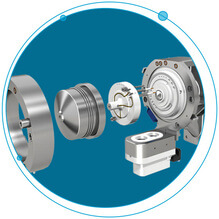 There’s no doubt about it, biopharma drug development is experiencing phenomenal growth and presents a variety of challenges not experienced in small molecule development. Some of these challenges are in the selective and sensitive quantitation of peptides and proteins in complex matrices. These large molecule analytes can suffer from matrix interferences, poor fragmentation and lack of quality unique peptides, or transitions compared to background, all which can affect the quality of analysis.
There’s no doubt about it, biopharma drug development is experiencing phenomenal growth and presents a variety of challenges not experienced in small molecule development. Some of these challenges are in the selective and sensitive quantitation of peptides and proteins in complex matrices. These large molecule analytes can suffer from matrix interferences, poor fragmentation and lack of quality unique peptides, or transitions compared to background, all which can affect the quality of analysis.
Traditional mass spectrometry (LC-MS/MS) assays continue to be highly effective for large molecule quantitation, but what if you need something more selective? What if you could easily ‘upgrade’ your already powerful mass spec? Thanks to advancements in mass spectrometry technology there is now an option that can be a game changer for peptide and protein quantitation workflows.
We are talking about the SelexION® Differential Mobility Separation (DMS) device. It offers a unique enhancement to your SCIEX mass spec, helping to remove sample interferences and separate isobaric peptide species, resulting in more sensitive and selective detection and quantitation of challenging large molecule targets.
Key Features of SelexION Technology for Peptide and Protein Quantitation
Using differential ion mobility spectroscopy (DMS) as an orthogonal dimension of separation prior to MS detection can provide many advantages:
Can provide enhanced specificity, selectivity, and sensitivity compared to LC-MS/MS alone
- Can reduce isobaric interferences and background noise originating from co-eluting contaminants present in complex matrices
- Can reduce high background noise to improve signal-to-noise ratio in MRM or MIM (multiple ion mode) assays
- Can improve precision and accuracy statistics to achieve lower levels of quantitation
Do you want to know more? We thought you might, so we have worked on a library of tech notes to support you in your quest to achieve high performing peptide and protein quantitation workflows in drug discovery and development. Download the eBook and get access to technical papers, webinars, and so much more.
Find out about The Science Behind SelexION Differential Ion Mobility Technology and How SeleXION Addresses Your Biggest Analytical Challenges.






 Contact Support
Contact Support
0 Comments